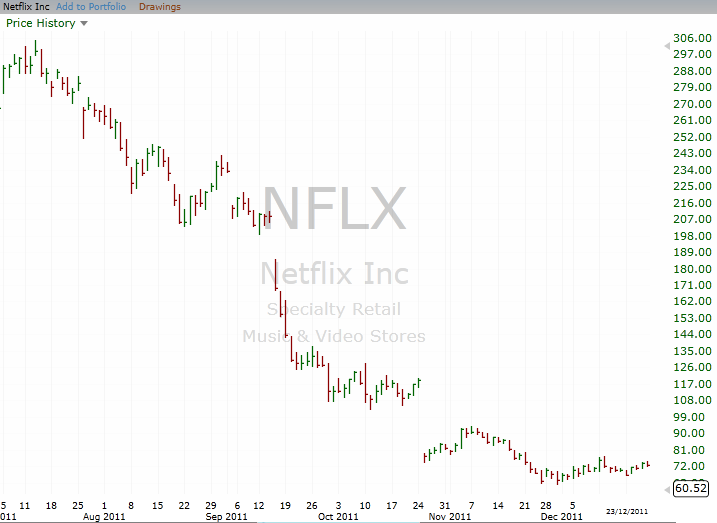- home
- the basics
- the share
- trading shares
- Process to buy shares
- Why buy shares?
- How old to buy shares?
- Custodial account
- tax rules on shares
- styles of trading
- buying (going long)
- Shorting (going short)
- Stop losses
- How to choose a share
- Fundamental analysis
- Technical analysis
- Stock portfolio
- Trading courses
- Stock trading practice accounts
- brokerage account
- What is trading software
- Share newsletters
- the stock market
- Trading guide
- Advanced
- Glossary
- free stuff!
Shorting stock
Shorting stock is the opposite of buying stock and is a concept that can be hard to grasp. The aim is to ‘sell high and buy low’. Shorting stock enables you to make money when the market is going down and when companies are failing, meaning that even when the economy is in recession, you can still make money! To do this, you are first selling something that you don’t actually own – so you are actually borrowing the shares and paying interest on the borrowed shares. Then you will ultimately buy shares to repay the borrowed shares to your broker. So, you are buying and selling shares, but you are simply doing so in reverse order.
Example
- you sell 100 shares @ $10 ($1,000)
- then buy the 100 shares back @ $9 ($900)
- and make a profit of $100!
Example 2
The example below shows Netflix stock price fall from July 2011 until December 2011.
- Shorting stock when the price was at $300 (July 2011) by selling 10 shares at $3,000
- Buying the stock back at $75 (December 2012) by buying 10 shares at $750
- Means you would pocket the difference of $2,250! A 300% profit!

Example 3 (another way to get your head around shorting stock!)
- your friend is going on a long holiday, he lends you his car
- you then sell his car for $10,000
- you go somewhere else and buy the same model car for $9,000
- when he returns from holiday he gets the same car back and you have pocketed $1000!
Important notes regarding shorting stock
1. To enable shorting stock you need a brokerage account with a margin. A margin will enable you to effectively borrow money, which what you need to do to sell a share then and then buy it back again.
2. Your broker will charge you interest on the money borrowed from them to short your stock.
3. When short selling stock, instead of receiving the dividend, you will sometimes have to pay it to the company, but as long as you are aware of when companies pay their dividends it shouldn’t be a problem.
4. If the trade goes against you (i.e. the price goes up) your broker may make a margin call, which means you will have to add more funds to your account to cover the purchase of the share at its current price.
Why not practice shorting stock using virtual money with a free stock market fantasy trading account.
4 Responses to Shorting stock
Leave a Reply Cancel reply
Practice Trade!
SharesExplained.com
- Loading Quotes...
Free newsletter and gift!
Sign up now!SharesExplained.com
Stock market basics
Shares explained
Stock charts explained
Stock dividends explained
Stock Split Explained
Stock attributes
Why do shares move up and down?
How do I read a stock quote?
Understanding company financial statements
Rights issue of sharesThe process of buying shares
Why buy shares
Age limit for trading shares
Custodial account
Tax rules on shares
Styles of trading
Buying (going long)
Shorting stock (going short)
Stop losses explained
Picking shares
Fundamental analysis
Technical analysis
Portfolio/Watchlist
Trading courses
Practice accounts
Brokerage accounts
Trading software
NewslettersStock market explained
Stock exchanges
Indexs
Sectors
Bull/bear market
What market to buy shares
Factors that affect the stock market
When does the stock market open?Stock market trading guide
Step by step guide to trading shares
Practice accounts
Brokerage accounts
Trading courses
Trading software
Newsletters/tipsites
5 golden rules when trading shares
The risk:reward ratio
LeverageStock market games
Stock market 60
Stock market suicideAdvanced stock market trading
IPO (Initial Public Offering)
Automated trading
Bonds/gilts
Exchange traded funds (ETF's)
FOREX
Mutual Funds
Penny shares
Spread betting
Options Explained


If you are selling stock and buying it back for less, why do you need to borrow anything?
Hi Cal – This is because you are doing things in reverse order when you short stock and you are selling shares before you’ve actually bought them. As such, you are selling something you don’t have. The only way to sell something you don’t have is to borrow it. When you ultimately buy the shares, you are not ending up owning them – you are buying them to repay your debt of those shares.
i m little doubtful about the percentage calculated in example 2 i.e. 75. i think it is 300 perc. as it is always calculated on cost price.
plz let me know if this is wrong.
thanks!
Dipak – You are absolutely correct. Good catch and I’ve updated the page accordingly. Thanks for spotting that.